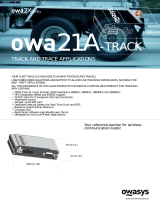Technical Documentation Release 1.0
2 List of available level 3 parts
(according to Component Matrix V1.13 - check C-market for updates)
Product ID OrderNumber DescriptionCM
E71 D1000 L50610-G6282-D670 IC SGOLD2PMB8876X2.1J11
E71 D1300 L50645-J4683-Y23 IC ASIC TWIGO4+BOOST MOZART-BOOST+BGA196
E71 D1800 L50620-L6172-D670 IC TELEC TEA5761UK
E71 D5100 L50610-U6122-D670 IC BLUETOOTHBRF6150PB-FREE
E71 D5930 L50645-K280-Y303 IC FEM HITACHIGSM90018001900 (FEM -Type 5)
E71 D5932 L50620-L6175-D670 IC TRANCEIVER Bright 6PL
E71 D5933 L50651-Z200-2A91 IC MODUL PA PF09039B (PA-Type 8)PBFree
E71 L1301 L50651-F5103-M1 Coil 10U (Co-Type 9)
E71 L1302 L36151-F5103-M7 Coil 10U (Co-Type 2)
E71 N3500 L50610-C6153-D670 IC V-REG 2.9V (Vr-Type 2)PBFree
E71 N4800 L50610-C6153-D670 IC V-REG 2.9V (Vr-Type 2)PBFree
E71 R1347 L36120-F4223-H Resistor TEMP22K (Res-Type 7)
E71 R5967 L36120-F4223-H Resistor TEMP22K (Res-Type 7)
E71 V1302 L36840-D5076-D670 Diode SOD323 (Di-Type 7)
E71 V1305 L50630-C1127-D670 Transistor FDMA1027P (Tra-Type 19)
E71 V1376 L50630-C1152-D670 Transistor FDMA3N109 (Tra-Type 18)
E71 V1400 L50640-D70-D670 Diode BAV99T (Di-Type 9)
E71 V2100 L50640-D5084-D670 Diode RB548W (Di-Type 8)
E71 V2300 L36840-C4061-D670 Transistor BC847BSBC846S (Tra-Type 10)
E71 V2302 L50640-C2131-D670 Transistor NPN+R1 R2 PDTC (Tra-Type 20)
E71 V2405 L50640-L2110-D670 LED GREEN SIDE-SHOOTER
E71 V2801 L36840-C4061-D670 Transistor BC847BSBC846S (Tra-Type 10)
E71 V2802 L50640-C2131-D670 Transistor NPN+R1 R2 PDTC (Tra-Type 20)
E71 X1400 L50634-Z97-C467 CONNECTOR BATTERY 3-POLX85
E71 X1504 L50634-Z93-C364 IO-JACK NANO 12-POL
E71 X1604 L50634-Z97-C406 CONNECTOR SIM CARD READER R65 (B)
E71 X2200 L50634-Z97-C457 CONNECTOR B2B 20-POL MALE
E71 X2705 L50634-Z97-C363 CONNECTOR BOARD TO BOARD 14-POL.X75
E71 X3500 L50634-Z97-C516 CONNECTOR HYDRA-CAMERA-SOCKET
E71 X4081 L50634-Z97-C382 CONNECTOR COAX SOCKET SWITCH ED2
E71 X4899 L50634-Z97-C448 CONNECTOR CARD READER TRANSFLASHHINGE
E71 Z1001 L50645-F102-Y40 QUARZ32,768KHZ (Q-Type 4)
E71 Z1501 L50620-U6067-D670 FILTER EMI (Fi-Type 8)PBFree
E71 Z1601 L50620-U6029-D670 FILTER EMI (Fi-Type 6)PBFree
E71 Z4801 L50620-U6030-D670 FILTER EMI (Fi-Type 10)PBFree
E71 Z5100 L50645-K280-Y330 FILTER BPBLUETOOTH
E71 Z5930 L50645-F260-Y37 QUARZ26MHZ (Q-Type 10)
TD_Repair_L3 _Theory of Operation_E71_R1.0.pdf Page 5 of 35
Created by inservio GmbH for BenQ mobile GmbH & Co. OHG - Company Confidential2006©inservio




















